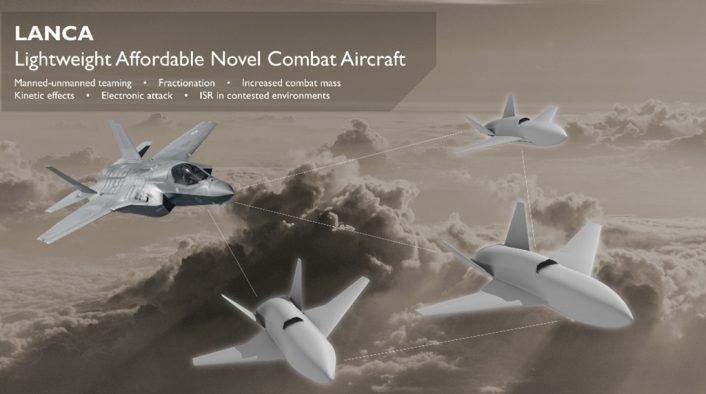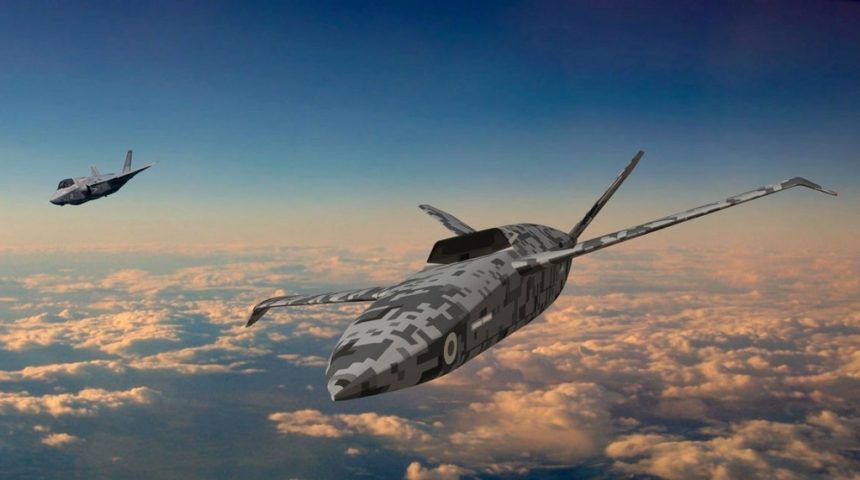Project Mosquito will be the technology demonstrator of an armed UAV that could fly as a Loyal Wingman alongside the Typhoon and F-35 before the end of the decade.
The United Kingdom signed a £30 million three-year contract to design and manufacture a prototype of the first “Loyal Wingman” Unmanned Aerial Vehicle (UAV) for the Royal Air Force. The company that was awarded the contract is Spirit AeroSystems, based in Belfast, Northern Ireland, and is set to take the lead of “Team Mosquito”, as the technology demonstrator project team has been called.
“This is a great win for the Northern Ireland defence industry and will showcase some of the most pioneering engineering work currently being undertaken in the UK. The £30 million project will accelerate the development of the UK’s future air power by delivering cutting-edge uncrewed aircraft, maintaining our position as a world leader in emerging technologies”, said Defence Minister Jeremy Quin.
Mosquito, comparable to the Skyborg program of the U.S. Air Force, is part of the bigger RAF Lightweight Affordable Novel Combat Aircraft (LANCA) concept that will offer “increased protection, survivability and information for the manned aircraft – and could even provide an unmanned combat air ‘fleet’ in the future.” The Loyal Wingman demonstrator is expected to use ground-breaking engineering techniques to ultimately perform a full-scale vehicle flight-test programme by the end of 2023.
Designed to fly alongside fighter jets, the UK’s first uncrewed fighter aircraft are one step closer to reality. As part of a three-year deal, a £30m contract will support more than 100 jobs in Northern Ireland. Read more here: https://t.co/v4r1fwpFTn pic.twitter.com/2ITSP3IhaC
— Ministry of Defence 🇬🇧 (@DefenceHQ) January 25, 2021
The RAF press release said that the uncrewed combat aircraft will be designed to fly at high-speed (in the transonic flight regime, according to older press releases) alongside fighter jets, armed with missiles, surveillance and electronic warfare technology to provide a battle-winning advantage over hostile forces.
Some renderings of a loyal wingman in RAF colors were published along the contract announcements. It is not known if they are related to the design that will be worked on by Spirit AeroSystems, however they are similar to others already published by the Defence Science and Technology Laboratory (Dstl), which is overseeing the works on behalf of the MoD.
The design actually is very reminiscent of the Kratos XQ-58 Valkyrie, with a streamlined fuselage, swept wings (with drooped wingtips), V-tail and engine inlet un the upper side of the fuselage. This already presents some differences compared to older renderings, where the drooped wingtips were missing and the wing was more of a cranked arrow configuration, similar to the wing used by the Boeing Airpower Teaming System.

Three teams, Boeing Defence UK, Team Avenger (led by Blue Bear Systems Research), and Team Blackdawn (Callen-Lenz, Bombardier Belfast and Northrop Grumman UK), were awarded Phase 1 contracts in 2019 to provide designs for the flight demonstrations phase of the project. None of these teams were mentioned in the press release for the Phase 2 contract awarded to Spirit AeroSystems, however Northrop Grumman UK was still mentioned to be part of the project. Phase 2 was supposed to select one of the teams’ design for further development.
The unmanned aircraft project, led by the RAF Rapid Capabilities Office and managed by the Defence Science and Technology Laboratory, originated in 2015, three years before the Tempest 6th generation aircraft announcement. The goal of the project is to understand innovative combat air technologies and concepts under the Future Combat Air System Technology Initiative (FCAS TI), the same programme which generated Tempest.
While a precise timeline for its entry into service has not been disclosed, the LANCA could be first deployed alongside the Typhoon and the F-35 by the end of the decade, before the entry into service of the new Tempest in 2035.
Project Mosquito is reportedly utilising the latest software development techniques and civilian aerospace engineering and manufacturing expertise provided by innovative partners from across the UK for a rapid development. This way, the project is expected to deliver dramatic reductions in costs and development timelines, while also ensuring the final aircraft design will be capable of being easily and affordably updated with the latest technology to keep an edge over potential adversaries.
According to the RAF, the Mosquito’s flexibility will provide the optimum protection, survivability and information as it flies alongside Typhoon, F-35B, and later, Tempest. Air Chief Marshal Sir Mike Wigston, Chief of the Air Staff of the RAF, said: “We’re taking a revolutionary approach, looking at a game-changing mix of swarming drones and uncrewed fighter aircraft like Mosquito, alongside piloted fighters like Tempest, that will transform the combat battlespace in a way not seen since the advent of the jet age.”
Richard Berthon, Director of Future Combat Air, further expanded the concept: “Project Mosquito is a vital element of our approach to Future Combat Air, rapidly bringing to life design, build and test skills for next generation combat air capabilities. Autonomous ‘loyal wingman’ aircraft create the opportunity to expand, diversify and rapidly upgrade Combat Air Forces in a cost-effective way, now and in the future.









